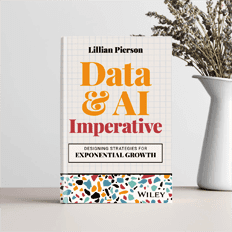AI is transforming how businesses grow their partner ecosystems. It helps companies find the right partners, improve collaboration, and measure performance more effectively. Here’s what you need to know:
- Faster Partner Matching: AI tools cut time-to-market by 34% and help identify 73% more high-value partnerships.
- Improved Collaboration: AI-powered platforms reduce communication issues, leading to 40% faster time-to-revenue and 35% lower operational costs.
- Custom Partner Programs: Tailored AI-driven resources boost engagement by 33% and speed up onboarding by 30-50%.
- Real-Time Performance Tracking: AI enables continuous monitoring, improving revenue growth by 28% and resolving issues 22% faster.
These AI-driven strategies are helping businesses achieve 2.3x faster revenue growth through smarter and more efficient ecosystem management.
AI Tools for Finding the Right Partners
Challenges with Traditional Partner Selection
Picking the right partners using old-school methods comes with its share of headaches. Companies relying on spreadsheets often struggle to assess key factors like technical compatibility or patent synergies [3]. This can lead to costly inefficiencies, including misaligned goals with manually chosen partners [6].
How AI Transforms Partner Matching
AI-powered platforms are changing the game by analyzing data across multiple dimensions. These tools are helping organizations close 53% more opportunities and achieve twice the revenue growth compared to traditional methods. They also cut time-to-market by 34%, as mentioned earlier [8].
| Criteria | Manual Approach | AI-Powered Approach |
|---|---|---|
| Technical Compatibility | Reviewing documentation manually | Automated analysis of specs and patents |
| Innovation Assessment | Simple keyword matching | Semantic analysis of patents |
| Partnership Alignment | Subjective judgment | Data-driven scoring for compatibility |
| Time to Partnership | 6-9 months | Real-time matching |
Take PQAI, for example. Using its patent analysis system, it identified 142 potential collaborators for a climate tech startup in just 72 hours. This led to three finalized partnerships in Q3 2024 [3]. Such efficiency directly tackles the administrative delays of traditional methods, allowing companies to form partnerships much faster.
"AI performs matchmaking by analyzing partners’ strengths, focus areas, and capabilities to create powerful alliances that lead to mutual growth." – E2open Partner Ecosystem Report [5]
Some standout features of these AI systems include:
- Natural Language Processing (NLP) for analyzing contracts and documents
- Predictive analytics to estimate success probabilities
- Real-time ecosystem monitoring
- Automated scoring for technical and strategic alignment [6]
These tools also contribute to a 35% boost in cross-selling revenue, as noted earlier. With 94% confidence in driving ecosystem growth, AI-based systems process massive datasets to uncover unexpected partnership opportunities. This makes partner selection faster, smarter, and more effective.
AI Platforms for Better Partner Teamwork
Poor Communication Between Partners
AI may simplify partner selection, but keeping collaboration smooth introduces its own hurdles. Disconnected communication tools like email, chat, and Slack often create confusion. In fact, 71% of organizations struggle with coordination due to fragmented communication channels [6]. The fallout? 23% longer sales cycles, 40% higher operational costs, and a 31% drop in customer satisfaction [1][4].
For companies expanding their partnerships, the problem worsens. 83% of businesses growing their ecosystems report serious coordination challenges without centralized collaboration tools [6]. Here’s how these issues play out:
| Communication Challenge | Business Impact |
|---|---|
| Fragmented Channels | 23% longer sales cycles |
| Knowledge Silos | 40% higher operational costs |
| Delayed Responses | 31% lower customer satisfaction |
| Misaligned Messaging | Duplicated efforts across teams |
AI Tools for Partner Management
AI doesn’t just help you find the right partners – it keeps the collaboration on track. By leveraging AI-powered tools, businesses can maintain alignment across their partner networks. These platforms offer 94% visibility into ecosystem activities through AI-driven performance forecasts [6].
Here’s how AI addresses communication challenges:
- Smart Knowledge Bases: Pre-built templates ensure consistent and accurate information sharing [2].
- Real-time Dashboards: Unified views track metrics like shared marketing ROI and co-developed product progress [7][9].
- Predictive Analytics: Machine learning identifies potential disputes 45 days ahead with 82% accuracy [4].
"AI-powered communication platforms facilitate seamless information sharing and collaborative problem-solving between partners at unprecedented scale." – Channel Partner Collaboration Report (2024)[1]
The results speak for themselves. Companies using AI-driven collaboration tools report:
- 40% faster time-to-revenue for joint ventures [9].
- 35% lower operational costs for partnerships [7].
Automation also plays a massive role. AI handles 73% of reporting and 89% of incentive calculations through CRM/ERP integrations [1][4]. This saves partners 55 hours per month on compliance tasks [6], freeing up time for strategic efforts instead of admin work.
Your Partner Ecosystem and AI in B2B Marketing
sbb-itb-e8c8399
Using AI to Customize Partner Programs
AI isn’t just improving how businesses communicate with their partners – it’s also changing the way partner programs are designed. Traditional, one-size-fits-all methods often fail to meet the diverse needs of today’s partners. A recent KPMG study found that standardized programs frequently miss the mark when it comes to addressing varying partner requirements [6]. Tailoring programs with AI helps resolve these mismatches, aligning them with the unique technical skills, business models, and growth goals of different partners.
The downsides of rigid programs are clear:
| Challenge | Impact | Data Source |
|---|---|---|
| Mismatched Resources | 48% report mismatched AI adoption plans | Organizations |
| Technical Focus | Ecosystem heavily skewed (84% tech partners) | Organizations |
| Growth Path Misalignment | 71% report reduced collaboration due to misaligned goals | Organizations |
AI-Generated Partner Resources
AI takes partner programs from static to highly personalized. For example, e2open uses generative AI to create tailored email campaigns and enablement kits based on each partner’s past performance and market focus [5]. By analyzing partner data, the system produces relevant case studies and product comparisons, resulting in 33% higher engagement rates.
Here’s how AI-driven customization is making an impact:
| Feature | Result | Source |
|---|---|---|
| Dynamic Playbooks | 30-50% faster onboarding | [1] |
| Smart Knowledge Base | 40% fewer support tickets | [2] |
| Automated Localization | 87% accuracy in Zendesk trials | [2] |
These systems rely on advanced partner profiling, predictive analytics, and seamless integration with CRM and LMS platforms to deliver results.
For example, Walmart applied machine learning to inventory management during the 2023 holiday season. This allowed them to create tailored stock plans for 85% of their suppliers, cutting overstock by 22% while maintaining 99.3% product availability [4]. This shows how AI customization not only improves efficiency but also boosts revenue.
AI for Partner Performance Measurement
AI isn’t just about customizing programs; it’s also a game-changer for tracking and improving partner performance. By providing continuous feedback, AI helps ecosystems grow and adapt to market needs.
Problems with Periodic Partner Reviews
Periodic reviews come with risks. Research from KPMG shows that only 34% of organizations consistently monitor ecosystem performance [6]. This lack of regular evaluation creates blind spots, and 71% of partnerships suffer from misaligned goals due to insufficient monitoring [6].
| Review Aspect | Traditional Method | Business Impact |
|---|---|---|
| Frequency | Quarterly/Annual | Slow response to emerging issues |
| Data Analysis | Manual Processing | 48% accuracy rate |
| Response Time | 30-45 days average | Missed opportunities to improve |
| Goal Alignment | Static Metrics | 71% misaligned partnerships |
Real-Time Partner Analytics with AI
AI changes the game by offering continuous monitoring and real-time adjustments. Platforms like e2open showcase this shift by automatically updating incentive structures based on live contribution metrics [5]. This approach allows businesses to quickly adapt to partner behavior and market changes.
"The ability to track partner performance in real-time represents a fundamental shift from reactive to proactive ecosystem management." – Todd Lohr, KPMG Advisory Markets Leader [6]
AI-powered analytics platforms track key performance metrics with impressive precision:
| Metric Category | AI Capability | Performance Impact |
|---|---|---|
| Deal Pipeline | Real-time velocity tracking | 28% revenue growth |
| Resource Usage | Automated utilization analysis | 40% faster issue resolution |
| Training Impact | Adaptive learning paths | 60% lower audit costs |
These systems also filter out anomalies automatically, providing cleaner and more actionable insights. According to KPMG, organizations using AI for tracking resolve issues 22% faster than manual methods and can predict challenges up to 90 days in advance [6][9].
Examples of AI Partner Programs
These examples show how AI-driven partner strategies deliver measurable outcomes across various industries:
Data-Mania: AI Partner Matching

Data-Mania’s AI platform leverages semantic analysis to assess tech stack compatibility, maintaining a balance of one AI-driven decision for every three human decisions. It also tailors its approach to specific industries, achieving impressive results:
| Industry Vertical | AI Customization | Performance Impact |
|---|---|---|
| Cybersecurity | Threat intelligence weighting | 82% accuracy in risk assessments |
| Climate Tech | ESG compliance metrics | 75% faster partner activation |
| Cloud Services | Workload compatibility scoring | 2.3x increase in ecosystem ROI |
This targeted strategy helps resolve the common issue of misaligned goals within enterprise ecosystems.
Alibaba Cloud‘s Rainforest Plan

The Rainforest Plan highlights a structured approach to managing partner ecosystems. It has achieved outcomes like 40-60% faster onboarding and 35% larger deal sizes – thanks to AI-powered partner matching and conflict prediction.
A key factor in its success is the platform’s advanced conflict management system. This system uses AI tools to analyze partner communication logs through sentiment analysis, identifying potential issues early on [10].
| Feature | Impact |
|---|---|
| Automated Matching | 50-70% faster solution development |
| Predictive Analytics | 28% improvement in retention rates |
| Support Automation | 40% reduction in support costs |
The program showcases how AI can continuously adapt to changing partner needs, as seen in the performance measurement section.
Conclusion: Next Steps for AI in Partner Programs
Main Points
AI is reshaping how organizations manage their partner ecosystems, especially in areas like matching, collaboration, and performance tracking. With 75% of organizations considering ecosystem partnerships essential for growth through AI-based solutions [6], the impact is clear:
| Impact Area | Current Achievement |
|---|---|
| Revenue Growth | 25% increase |
| Operational Efficiency | 60% faster conflict resolution |
| Partner Activation | 30-50% faster onboarding |
These numbers highlight how AI, when combined with human expertise, can drive measurable improvements in partner programs.
Looking Ahead
To maintain and expand these successes, businesses should focus on three key areas:
- Infrastructure Development
Cloud-based partner portals with built-in analytics are now a must-have. Industry reports show that 78% of successful programs rely on specialized MLOps platforms like those offered by Data-Mania and Alibaba Cloud to manage algorithms [5]. This setup allows AI capabilities to scale efficiently across the ecosystem.
- Balanced Implementation
The best results come from blending AI’s data-processing power with human judgment for strategic decision-making. This approach works particularly well in complex tasks like structuring alliances and resolving conflicts [11].
- Continuous Evolution
AI systems must continuously improve by analyzing real-time metrics. This ensures ongoing growth, innovation, and alignment with compliance requirements [5].
Related Blog Posts
- AI Agents in Marketing: The Secret to Driving 10x Engagement & Conversions
- 5 Ways AI Can Optimize Marketing ROI for your Tech Startup
- Collaborative Lead Scoring for B2B Teams
- How Co-Marketing Boosts B2B Tech Partnerships





